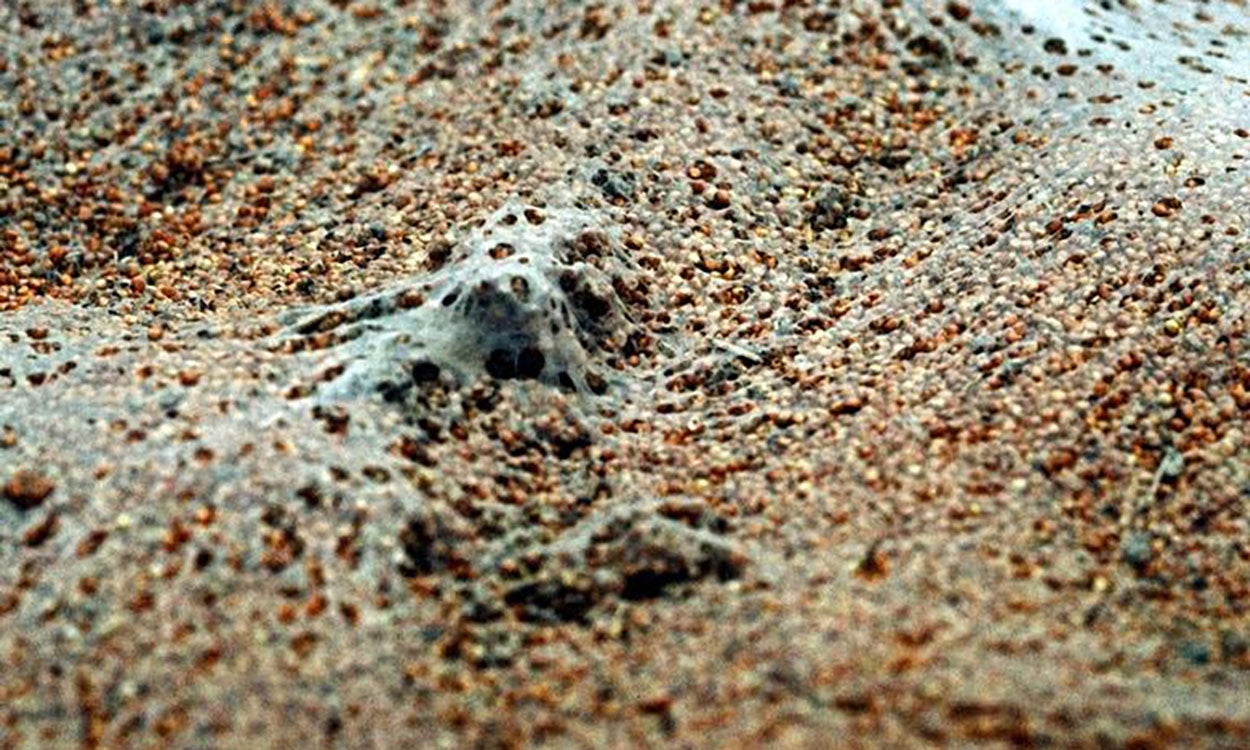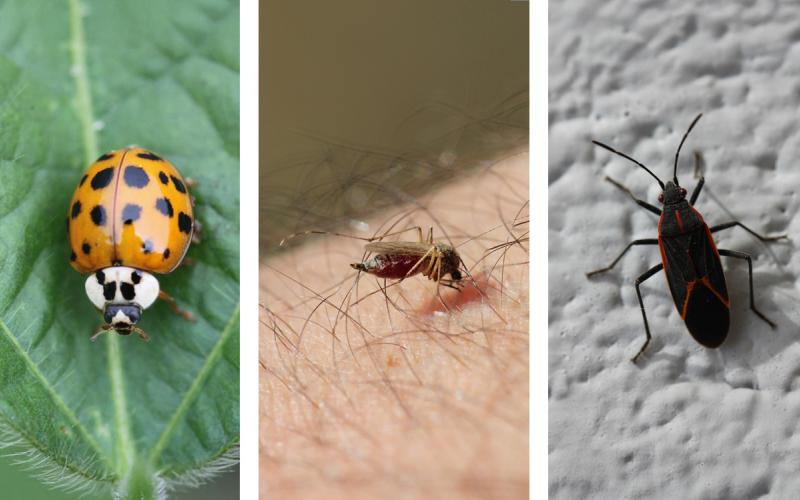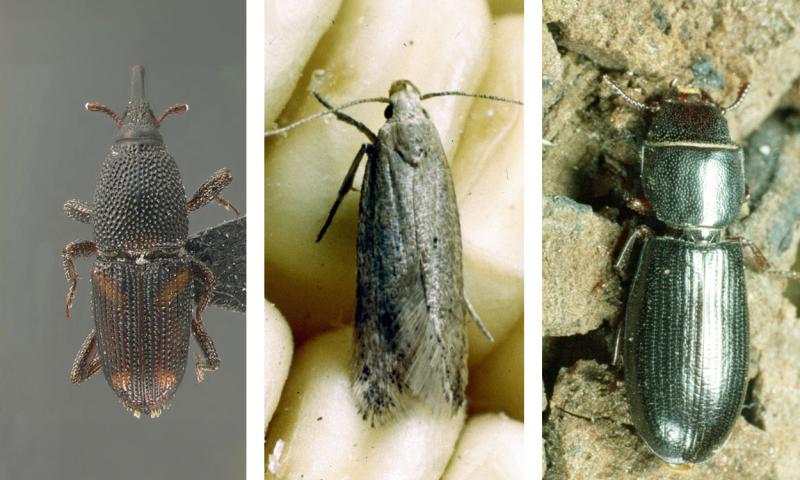
Originally Submitted: January 11, 2024
Written collaboratively by Adam Varenhorst, Philip Rozeboom, Patrick Wagner, and Brad McManus.
In South Dakota, there are several species of insects that feed on stored grain, resulting in reduced grain quality. In addition, the presence of dead insect bodies can also cause docking when the grain is being marketed. Both the immature (larval) and adult stages of stored grain beetles can cause damage to grain, while only the larval stage of the stored grain moths cause damage. These insect pests can be grouped based on whether they are internal feeders or external feeders. Internal feeders feed within the kernels, while external feeders will consume grain dusts, cracked kernels, and other grain debris. Below are the common internal and external stored grain pests. In addition to these, other species, including the foreign grain beetle and hairy fungus beetle, may be observed in a bin. However, these beetles are feeding on the molds or fungi growing on the grain and not the grain or grain debris.
Internal Feeders
Weevils
Of the internal feeders, weevils (shown in Figure 1, Figure 2, and Figure 3) are generally given the most attention, because they are among the most-destructive pests of stored grain. The larvae of grain weevils develop within the kernels, and when infested grain is left undisturbed for long periods of time, they can cause nearly complete destruction. Adult weevils are easily distinguished from other beetles by their elongated snouts.
Granary Weevil

Maize Weevil
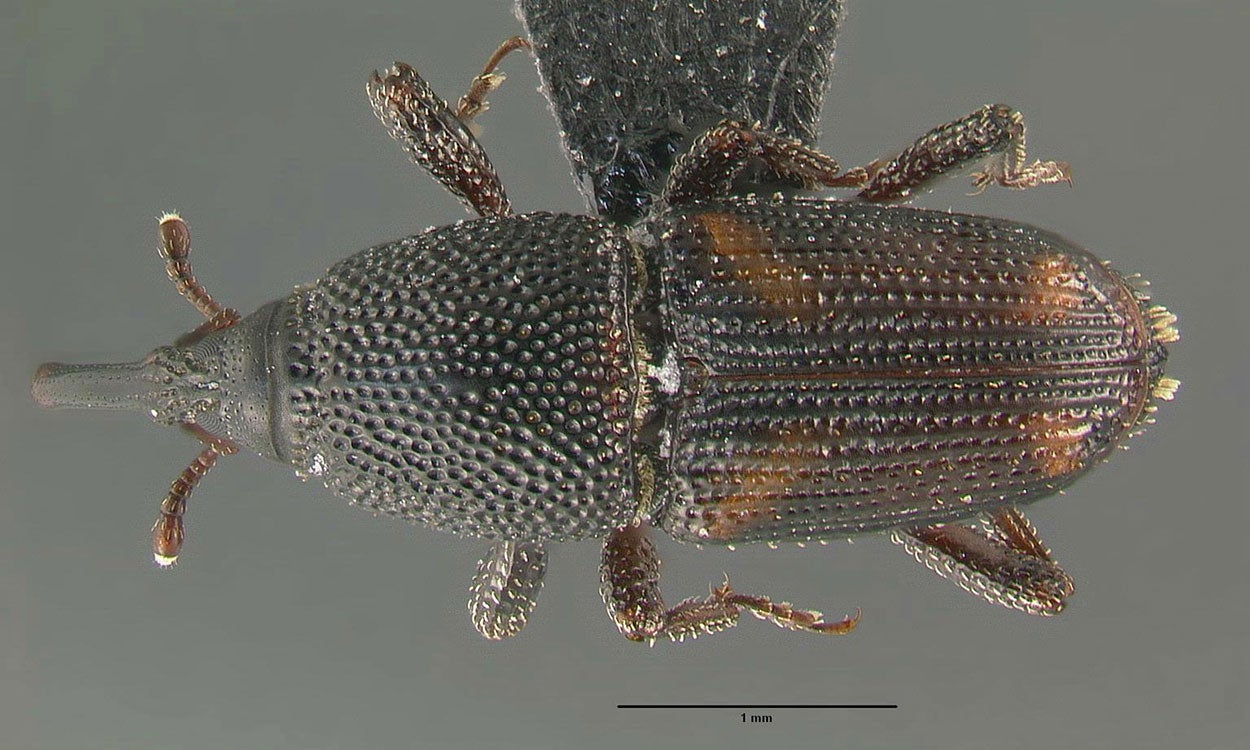
Rice Weevil
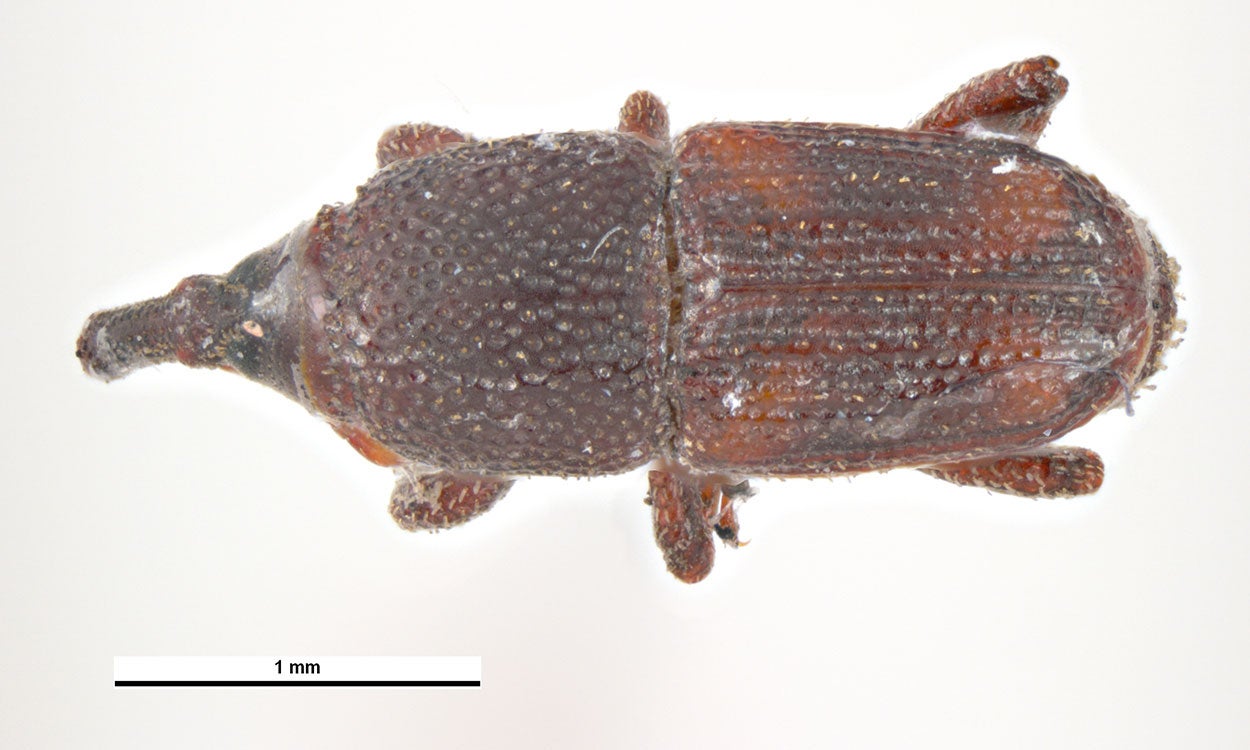
Lesser Grain Borer
The lesser grain borer (Figure 4-1) is a pest of a wide variety of grains. The larvae and adult (Figure 4-2) of this pest are damaging. The larvae of this pest are unable to infest undamaged kernels. In addition to kernels, the larvae are also able to develop on grain meal.
Lesser Grain Borer - Profile
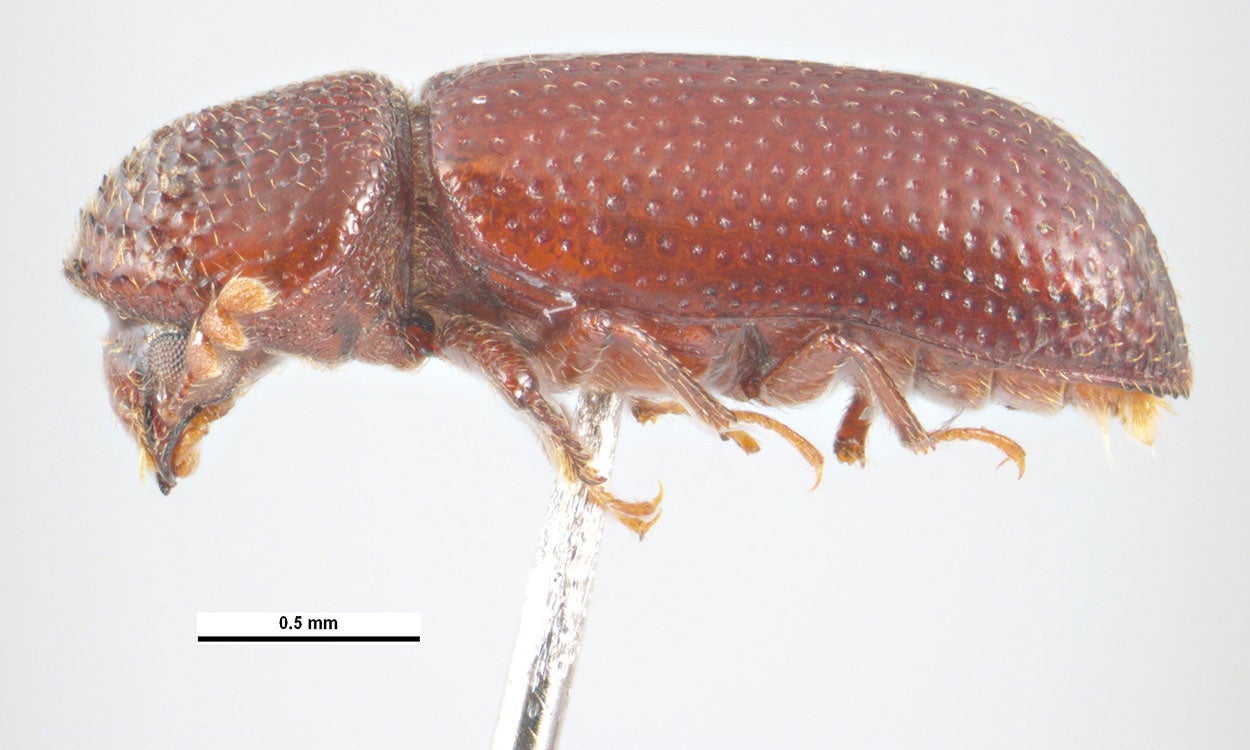
Lesser Grain Borer - Feeding
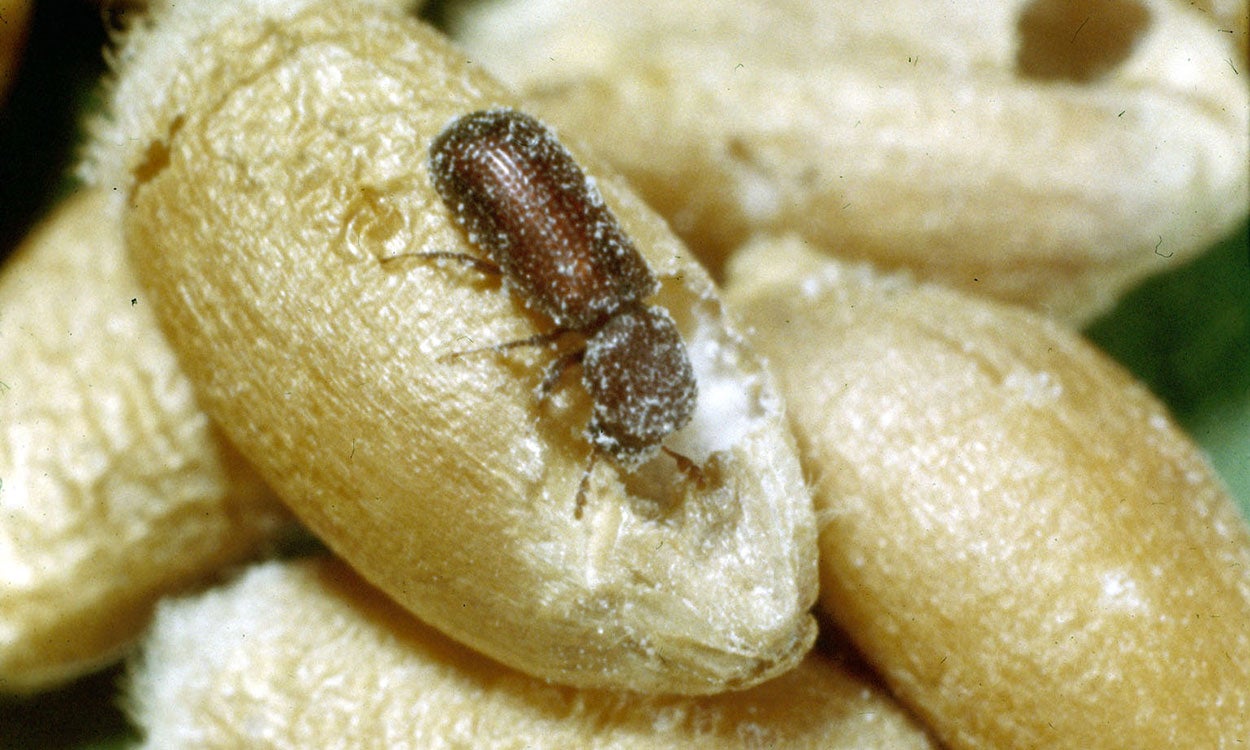
Balance.image.frame
Angoumois Grain Moth
The larvae of the angoumois grain moth (adult - Figure 5, caterpillar - Figure 6) are typically not a pest of shelled grain. However, the larvae are a pest of ear corn and can infest the corn before it is harvested. The larvae feed inside kernels and cause an unpleasant smell. During warm falls, several generations of the moth can be completed, resulting in significant damage.
Angoumois Grain Moth - Adult
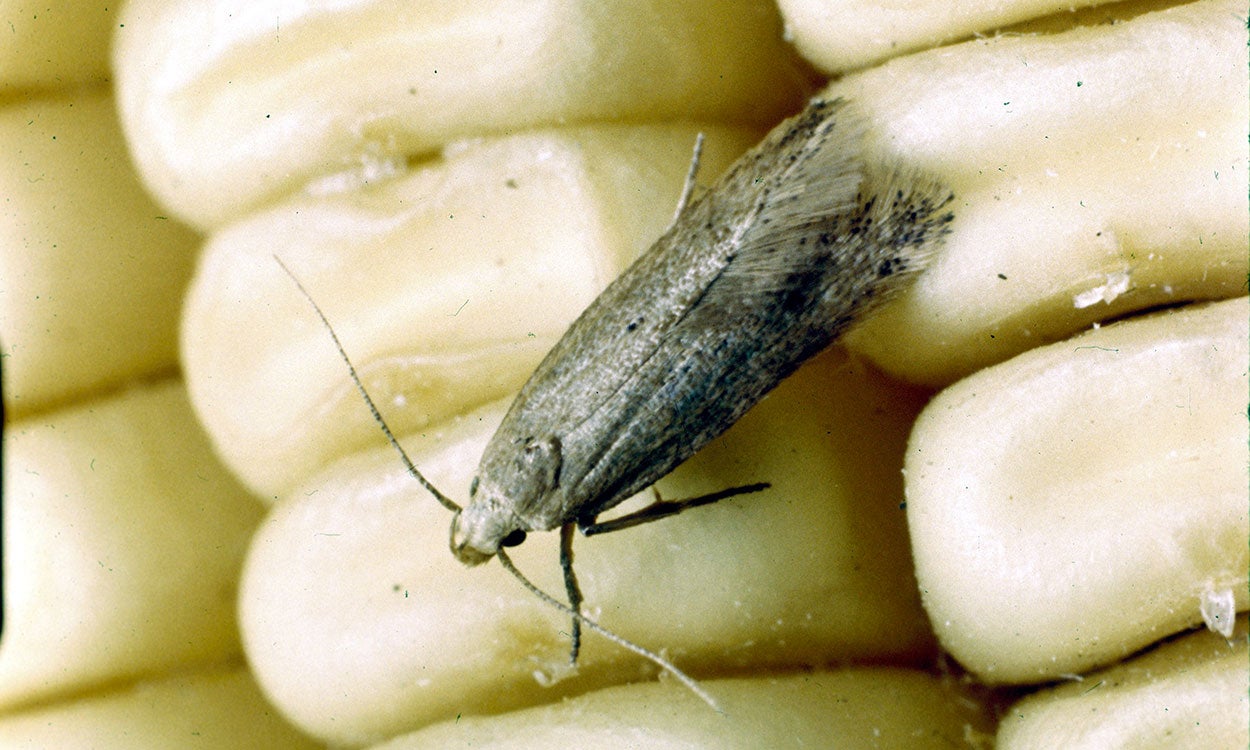
Angoumois Grain Moth - Caterpillar
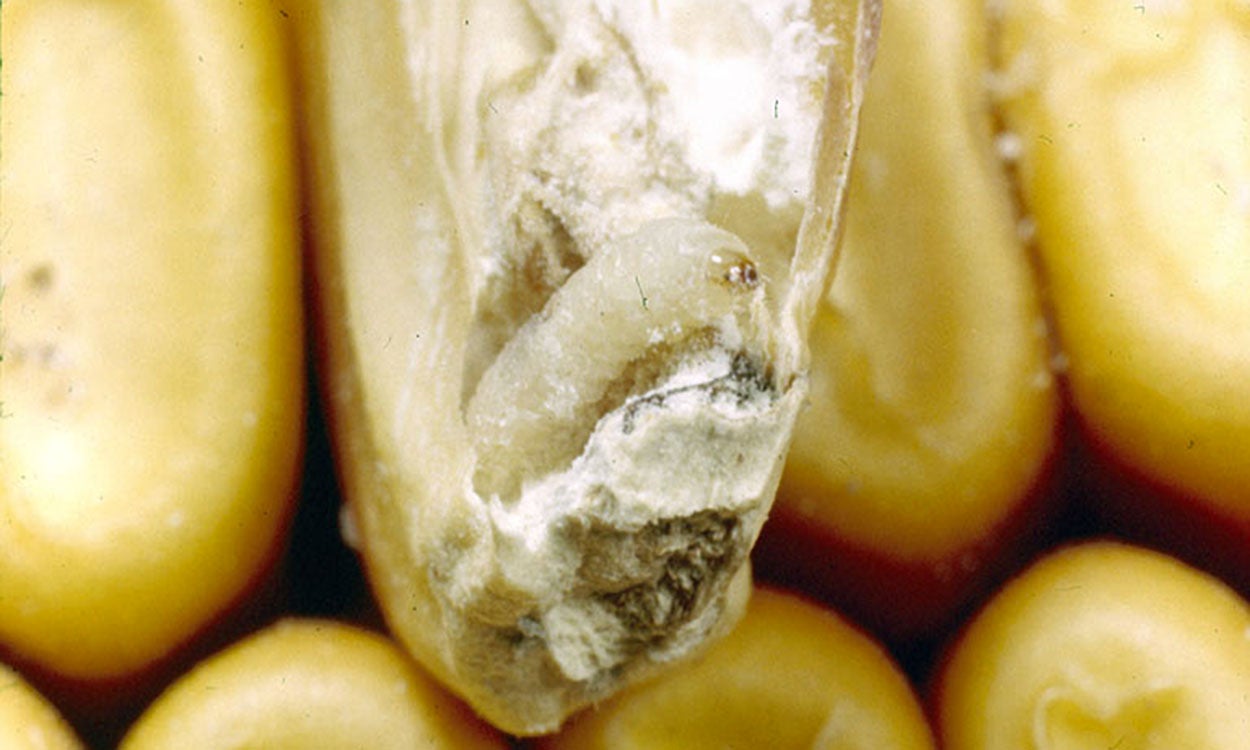
Balance.image.frame
External Feeders
The stored grain pests that are external feeders are present in the grain because grain dusts, cracked kernels, or other grain debris are present and are viable food sources. Similar to internal feeders, the best management for these insects is prevention. The presence of fungus feeders indicates that the grain is moldy. Proper aeration and grain cleaning can prevent most infestations caused by external feeders.
Beetles
The cadelle beetle (Figure 7), confused flour beetle (Figure 8), flat grain beetle (Figure 9), red flour beetle (Figure 10), and sawtoothed grain beetle (Figure 11) are present in the grain due to the availability of cracked kernels, dust, and other grain debris. In some instances, these beetles will feed on kernels that were damaged by internal feeders.
Cadelle Beetle
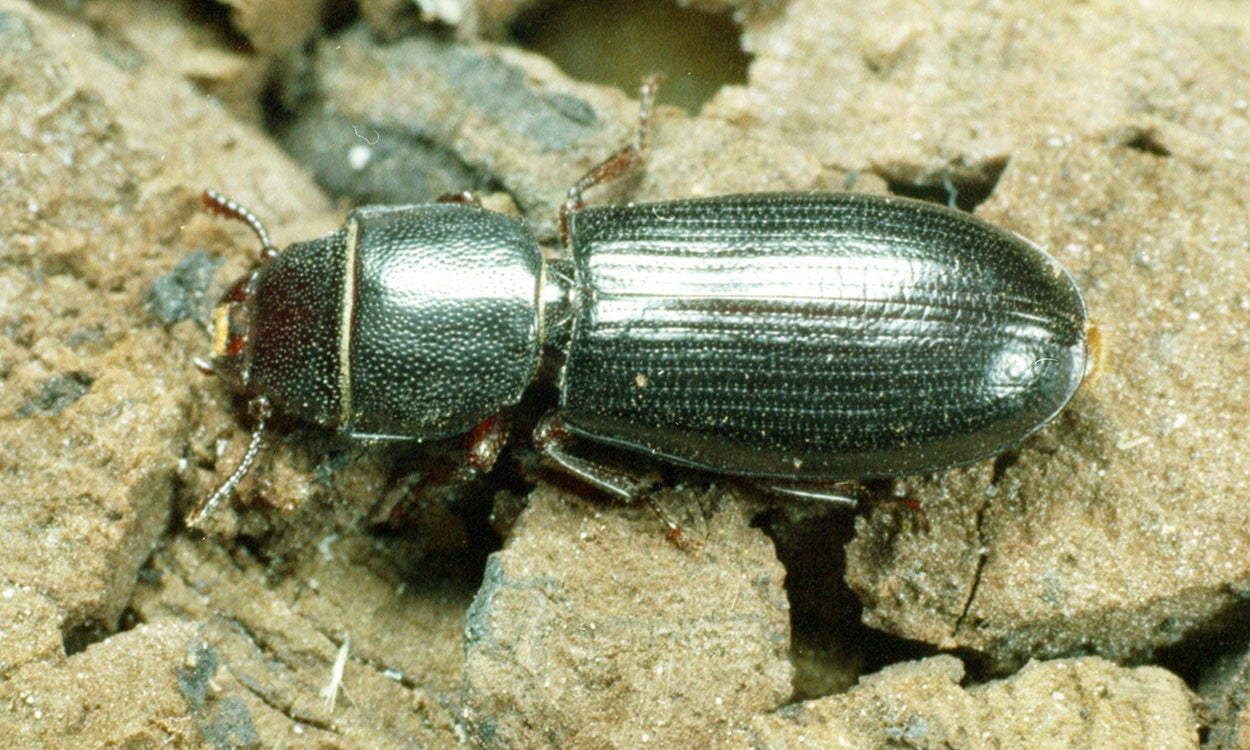
Confused Flour Beetle
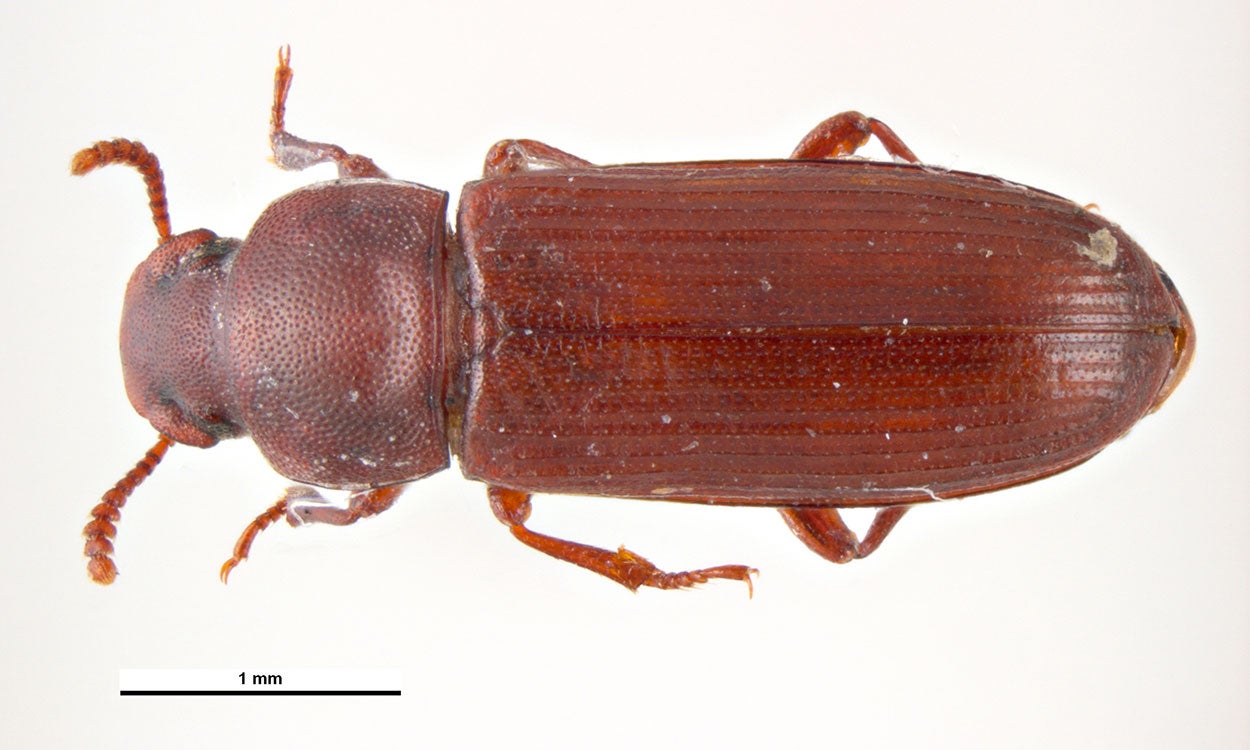
Flat Grain Beetle
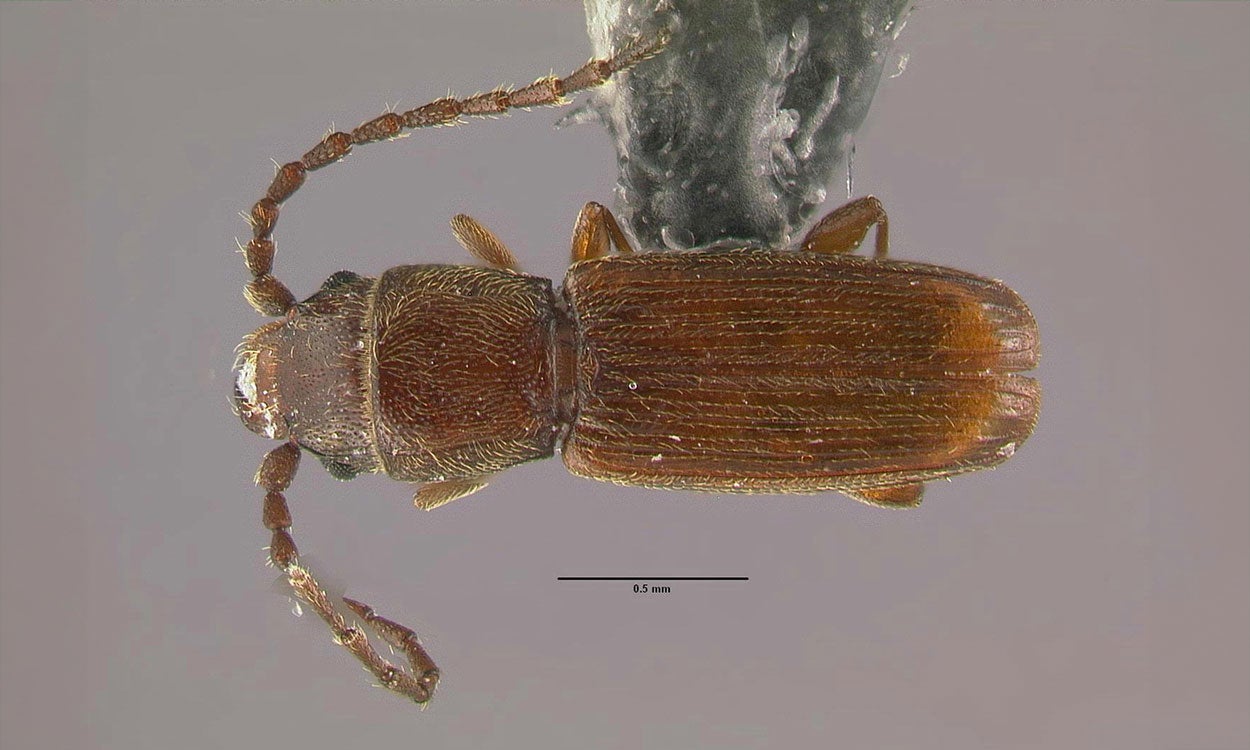
Red Flour Beetle
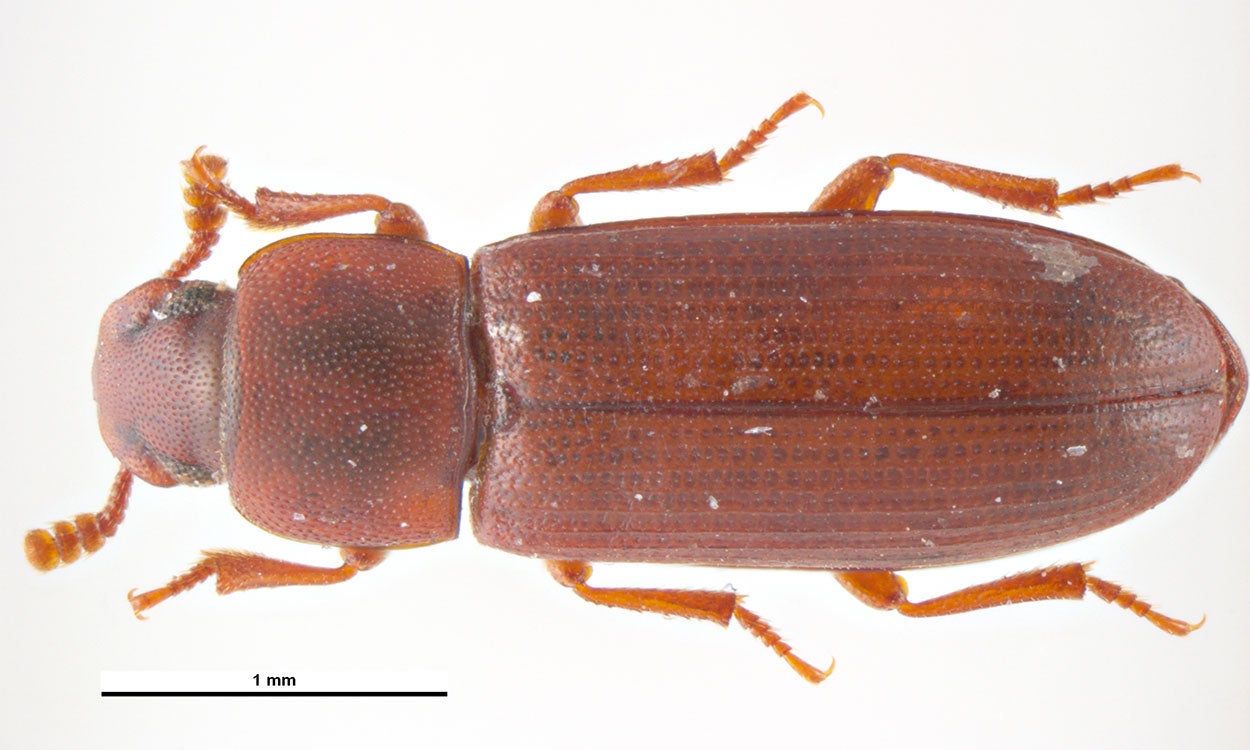
Sawtoothed Grain Beetle
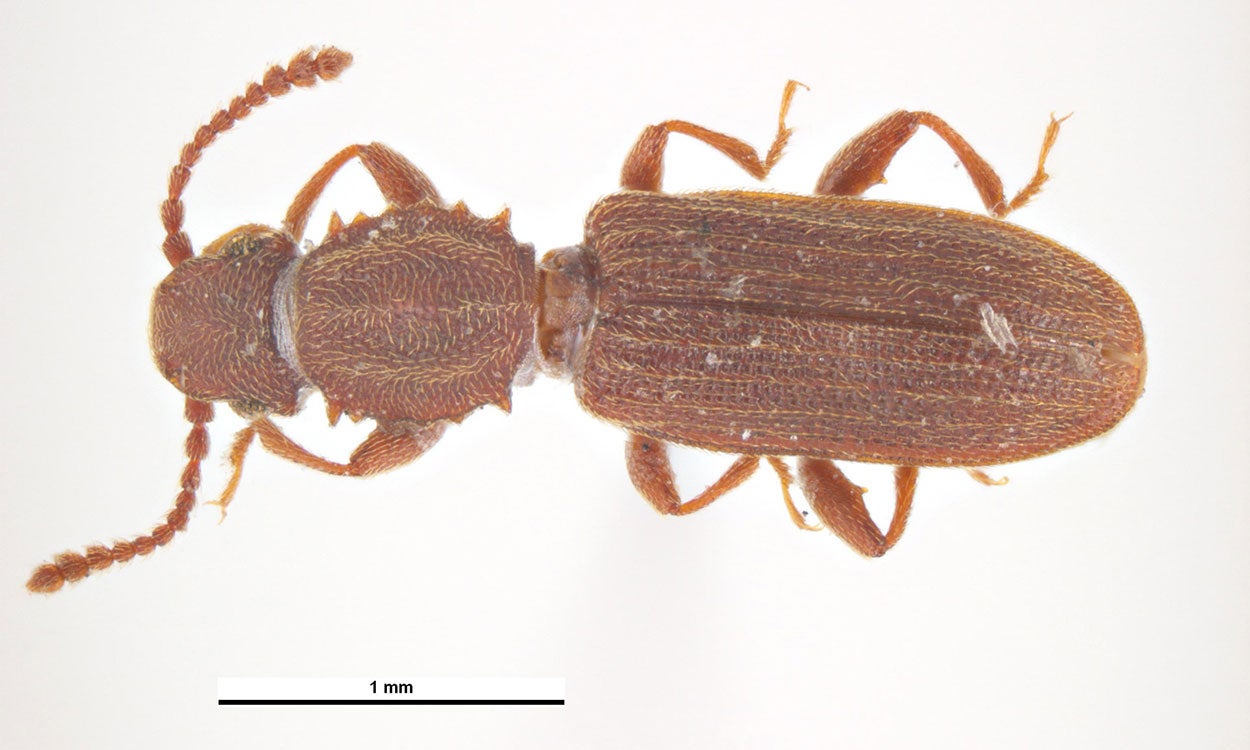
Balance.image.frame
Indian Meal Moth
The larvae of the Indian meal moth (adult moth shown in Figure 12, caterpillar shown in Figure 13), cause direct damage to the grain by feeding on the seed germ. The larvae of this pest also reduce the quality of grain by producing waste and constructing silken webs. These webs are often observed on the top surface of the grain and can become quite thick (Figure 14).
Indian Meal Moth - Adult
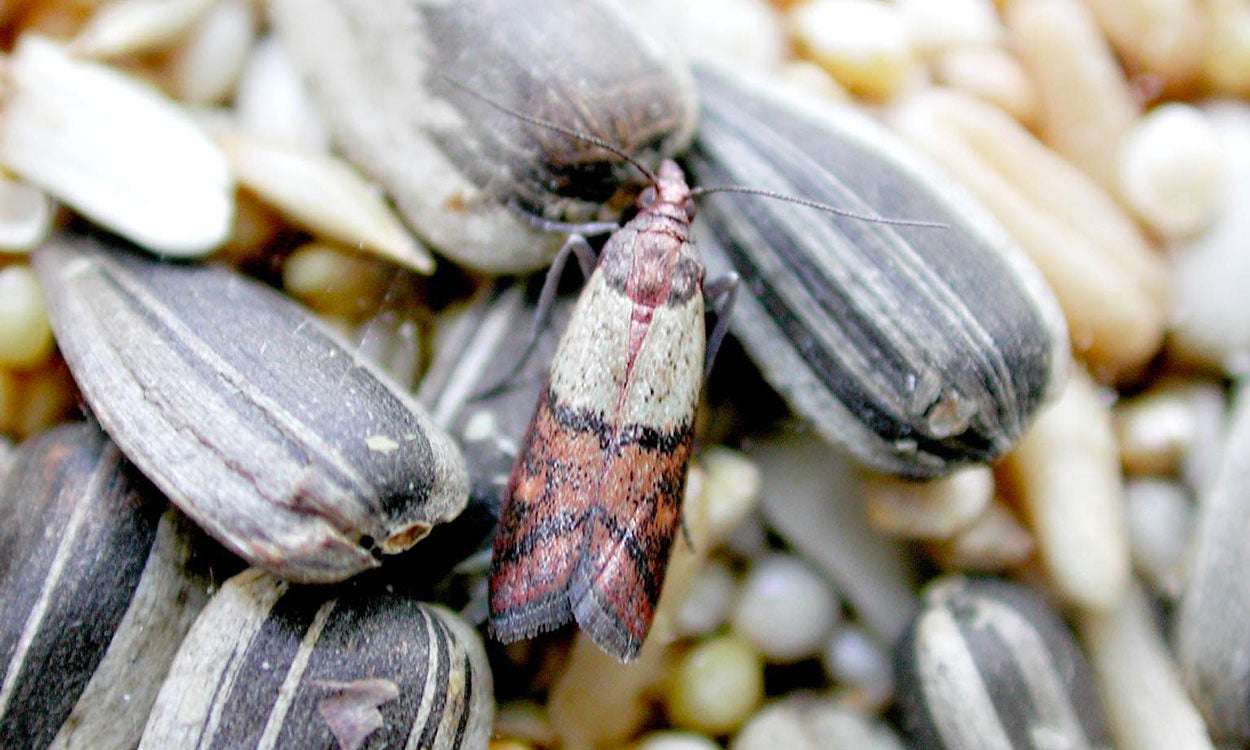
Indian Meal Moth - Caterpillar
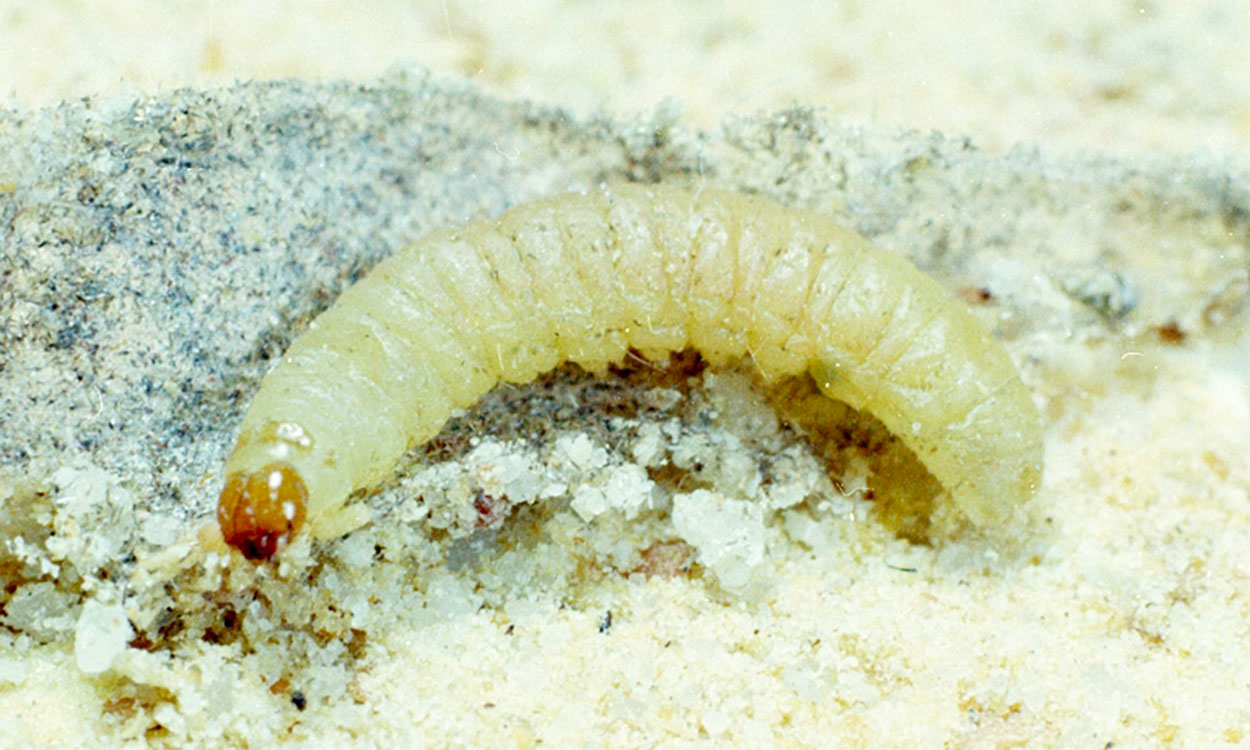
Indian Meal Moth - Webbing
